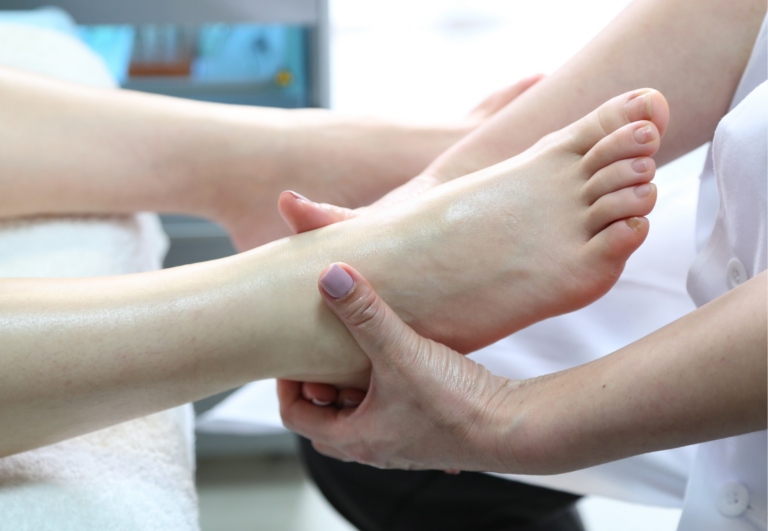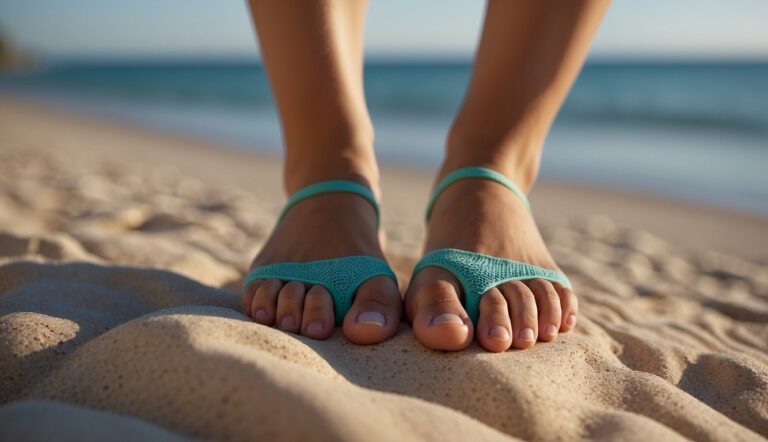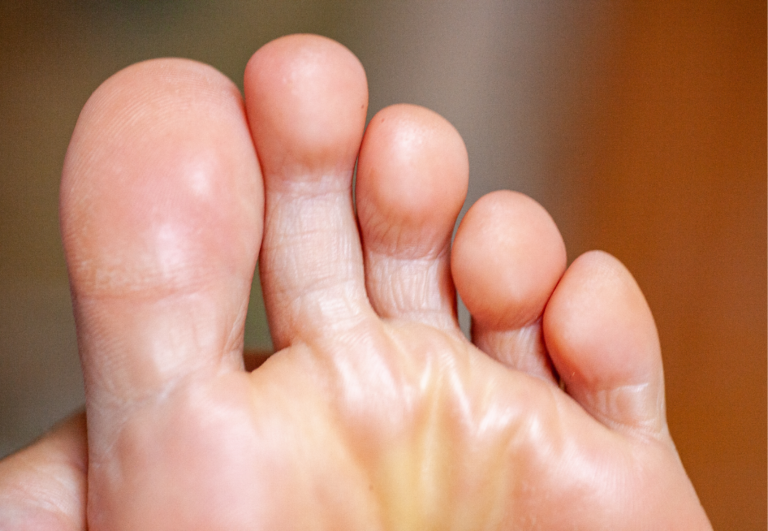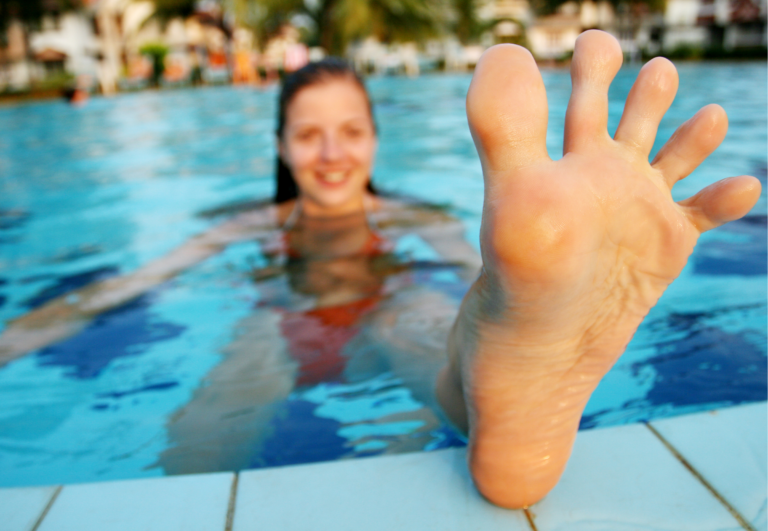Toe Spacing Techniques: A Guide to Optimal Foot Health and Comfort
Toe spacing is an effective technique that can offer numerous benefits for foot health, including the relief and prevention of common issues such as blisters, corns, calluses, and bunions. As someone with experience utilizing toe spacers, I can personally attest to the comfort and support they provide. These simple devices work by gently separating the toes, restoring the natural alignment of the foot, and improving overall balance and support.
Using toe spacers like Correct Toes, which are constructed from medical-grade silicone, has been a game changer for many. The design is such that it allows the toes to spread anatomically, which can help in addressing a variety of foot and toe problems. While I’m not a doctor, I have found that incorporating toe spacing into my routine has contributed positively to maintaining the natural shape of my feet and improving my foot strength. Being proactive in foot care is crucial since our toes play a significant role in supporting the entire body and in our ability to walk and run effectively.
Anatomy and Physiology of Toes
In this section, we’ll explore the essential anatomy of the foot, the vital functions of toes, and some common foot issues. You’ll gain knowledge on keeping your toes healthy and understand the importance of their role in overall foot function.
Foot Anatomy and Toe Functions
Our feet are intricate structures composed of bones, tendons, ligaments, and muscles. Specifically, each foot has 14 toe bones, known as phalanges, which form joints with each other and with the longer bones in the foot, called metatarsals. These joints are supported by ligaments that hold the bones together and tendons that attach muscles to the bones, allowing movement.
Muscles play a central role in foot movement and stability. They help control toe positions and produce the strength needed for walking and running. Toes aid in weight distribution and balance. They grip the ground and propel the body forward. Proper alignment and spacing of toes are crucial for executing these functions effectively.
Strengthening Exercises
- Toe lifts: Keep your heels firmly on the ground and try to lift each toe individually. This exercise enhances toe muscle control.
- Toe spreads: While seated, spread your toes apart, hold for a few seconds, and then relax. Repeat to promote flexibility and strength.
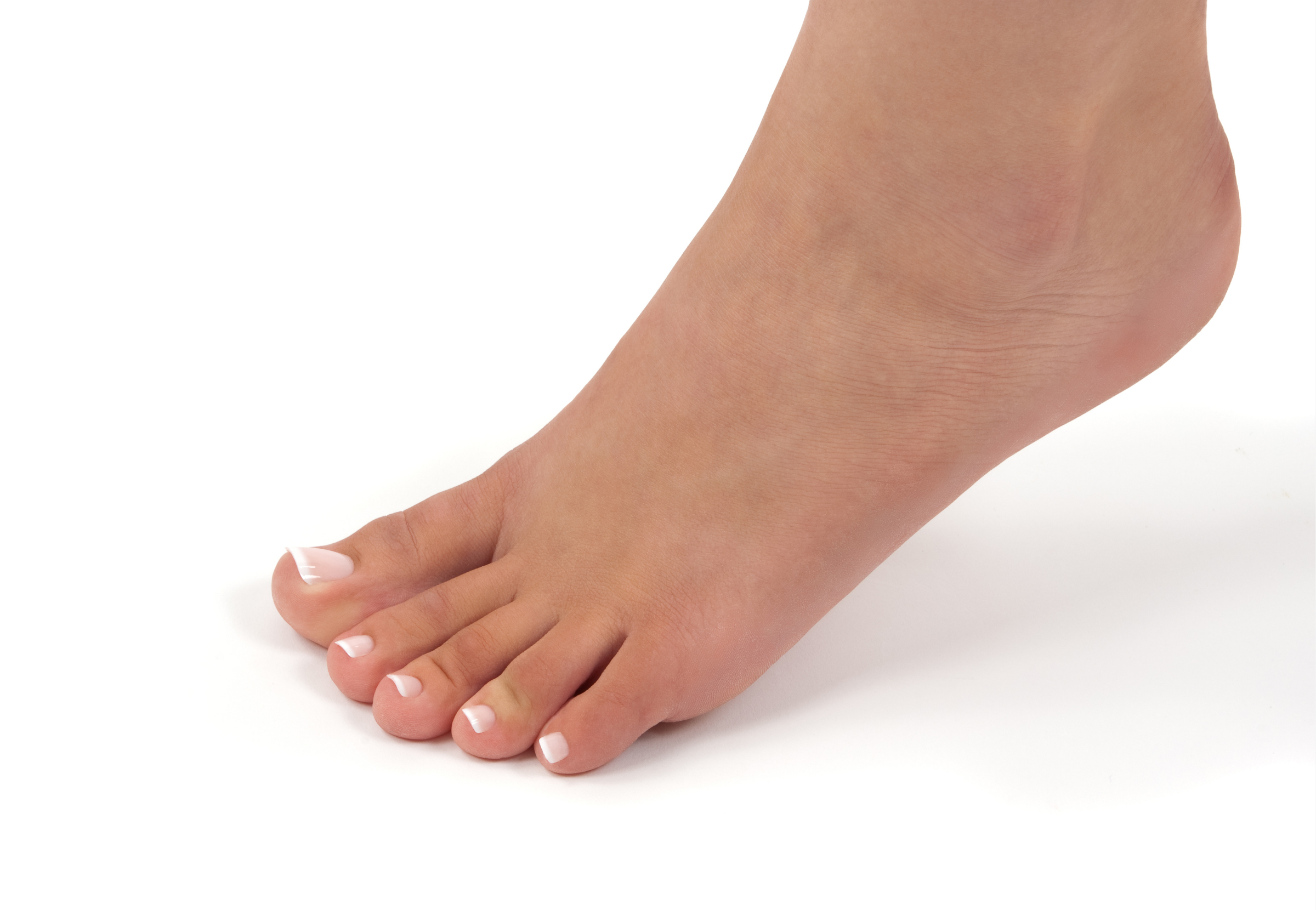
Common Toe and Foot Issues
Issues such as bunions, corns, blisters, and deformities can arise when your toes do not have enough room or are confined in tight footwear. Such problems can cause pain and affect mobility. Toes are especially susceptible to these issues due to their role in everyday functions like walking and running.
- Bunions: These are bony bumps that form at the joint at the base of the big toe, caused by misaligned joints that can force the toe to bend towards others.
- Corns and calluses: These are areas of thickened skin that form to protect the foot from pressure but can be painful and lead to other problems if not managed properly.
Regularly spacing and exercising your toes can help in maintaining proper foot anatomy and preventing common toe and foot issues. Using toe spacers like Correct Toes can help maintain natural toe alignments and reduce risks of associated foot problems.
Benefits of Toe Spacing
Toe spacing practices contribute significantly to proper foot mechanics, enhancing natural toe alignment and promoting better foot health. By employing toe spacers, I can confidently say that individuals often experience improved balance, comfort, mobility, and flexibility.
Enhancing Mobility and Flexibility
Incorporating toe spacers into your routine can aid in improving your toes’ mobility and flexibility. Here’s a simple exercise to get started:
- Sit comfortably and place the toe spacers between each toe.
- Hold the position for 2-3 minutes, allowing your toes to adjust.
- Gently flex your toes, pressing them against the spacers.
- Release the tension and relax your toes for 30 seconds.
- Repeat the flex-release cycle five times.
Consistent use of toe spacers can lead to enhanced flexibility in the toes, allowing for better movement and reducing the risk of injuries that stem from rigidity.
The Benefits Table:
| Benefits | Description |
|---|---|
| Improved Flexibility | Allows each toe to move independently, increasing their range of motion. |
| Enhanced Mobility | Facilitates smoother transitions and toe-offs while walking or running. |
Improving Balance and Stability
Balance and stability are pivotal for day-to-day activities. By using toe spacers, I’ve observed that they promote a more natural toe alignment, which in turn can improve overall balance. The exercise below targets balance enhancement:
- Stand up straight with toe spacers inserted.
- Shift your weight gently from side to side, focusing on the sensation in your feet.
- Try to stand on one foot, if possible, for a count of 10-15 seconds.
- Switch to the other foot, aiming for an equal amount of time.
This simple practice can eventually build greater strength in the foot muscles and establish a more stable foundation for your body.
Key Enhancements Chart:
| Enhancements | Impact on Stability |
|---|---|
| Foot Strength | Stronger muscles contribute to improved support and balance. |
| Natural Alignment | Proper toe positioning assists in distributing weight evenly across the foot. |
| Circulation | Increased spacing may lead to better blood flow, affecting overall foot health. |
Throughout the application of toe spacing techniques, remember to listen to your body and proceed gradually to avoid discomfort.
Toe Spacing Techniques
Toe spacers, when used correctly, can be an effective tool for improving toe alignment and overall foot health. These devices, often made from materials such as silicone or gel, work by separating the toes gently to help stretch and reposition them.
Proper Use of Toe Spacers
I recommend selecting toe spacers made from medical-grade silicone for durability and comfort. Here’s how to use them properly:
- Clean your feet and toe spacers: Make sure both are clean to prevent any skin irritation.
- Insert the toe spacers: Gently place the toe spacers between each toe, ensuring a snug but comfortable fit.
- Start with short intervals: Initially, wear them for 5-10 minutes daily and gradually increase the duration as your toes adjust.
- Monitor for discomfort: If you experience any pain or discomfort, remove the spacers and reduce the wearing time for the next session.
Exercises for Toe Spacing
Beyond just wearing toe spacers, I find certain exercises can enhance their benefits:
- Yoga and Tai Chi: These practices have movements that naturally promote toe strength and flexibility.
- Stretching: Gently pulling your toes apart or pressing them down can help improve their range of motion.
Incorporate these techniques into a routine:
- Toe presses: Press each toe down and hold for 3 seconds, then release. Repeat 10 times.
- Toe splaying: Attempt to splay your toes apart and hold the stretch for a few seconds. Repeat this motion 10 times.
- Walking barefoot: Occasionally, walk barefoot on natural surfaces to allow your toes to move freely.
It’s important to perform these exercises consistently to see benefits with toe spacing. If you have specific foot conditions or pain, it would be wise to consult a podiatrist before beginning any new exercise regimen.
Choosing the Right Toe Spacing Products
When looking for toe spacers, it’s critical to consider the materials used, the design of the product, and how it compares to others on the market. Let’s dive into the details to ensure you make a well-informed decision.
Materials and Design Considerations
Materials: The choice of material is important for comfort and durability. Medical grade silicone is favored for its flexibility and hygiene, while gel-based spacers offer cushioning. Look for products labeled as “medical-grade silicone” to ensure quality and safety for your skin.
Design: A well-designed toe spacer accommodates the natural anatomy of your feet. It should allow for a comfortable splay without causing discomfort. Avoid Spartanic, rigid designs that don’t mimic the foot’s natural position.
Exercise Routine with Toe Spacers:
- Toe Presses: With spacers in place, press each toe down and hold for 5 seconds, then release. Repeat ten times.
- Spaced Toe Taps: Tap each toe on the ground while keeping the spacers intact. Perform 20 taps with each toe.
- Toe Splay: Focus on spreading your toes apart with the spacers in, hold for 10 seconds, and then relax. Do this exercise five times.
Comparison of Popular Toe Spacing Products
Let’s compare some prominent toe spacing products:
Correct Toes:
- Material: Medical-grade silicone
- Design: Anatomically shaped to allow for natural toe splay
Dr. Frederick’s Bunion Pad and Spacer Kit:
- Material: Gel or silicon variations
- Design: Includes bunion pads along with spacers for pain relief
| Product | Material | Durability | Design | Pain Relief |
|---|---|---|---|---|
| Correct Toes | Medical-grade silicone | High | Anatomical | Yes |
| Dr. Frederick’s Kit | Gel/silicon | Moderate | Cushioned | Yes |
In my experience, choosing a spacer that is crafted from durable, body-friendly materials such as silicone, and designed with foot anatomy in mind, tends to offer the most benefits. It’s wise to invest in a quality product to ensure both comfort and effectiveness in the long run.
Addressing Specific Foot Conditions
Toe spacers are specific tools employed to provide relief from common foot deformities. By realigning the toes to their natural position, these devices offer a non-surgical approach to alleviate discomfort and aid foot health.
Toe Spacing for Bunion Relief
Bunions, which manifest as bony protrusions at the joint of the big toe, often result from misalignment and can cause significant discomfort. Here’s a routine I recommend for bunion relief:
- Apply a Bunion Pad: Start by placing a soft bunion pad over the affected area for cushioning.
- Insert Toe Spacers: Next, insert gel or silicone toe spacers between the big toe and the second toe. Ensure they’re comfortable and do not cause pain.
- Stretching Exercises: Gently stretch the big toe away from the others for about 10 seconds, repeating this 3-5 times a day to realign the toe joint.
- Consistent Usage: Make regular use of Correct Toes toe spacers, especially during long periods of standing or walking.
Remember, while these steps can offer relief, they are not a substitute for professional medical advice.
Solutions for Hammertoes and Overlapping Toes
Hammertoes and overlapping toes are caused by muscle imbalances leading to misshapen joints. Effective management strategies include:
- Gentle Repositioning: Begin by manually straightening the affected toe and holding it in a natural position for a few moments.
- Toe Spacers Insertion: Use toe spacers to maintain separation between the toes, preventing them from overlapping.
- Strengthening Exercises: Perform toe curls and extensions to strengthen muscles and promote better alignment.
Consistency in employing these solutions can provide pain relief and may help in avoiding invasive solutions like surgery. However, persistent or worsening symptoms require evaluation by a healthcare professional.
Incorporating Toe Spacing into Daily Routines
Incorporating toe spacers can enhance foot comfort and health. Athletes and everyday individuals can benefit from specific techniques to improve foot alignment.
Toe Spacing for Athletes and Runners
As someone experienced in toe-spacing techniques, I know firsthand the importance of proper foot care for athletes and runners. Physical activities such as walking, running, and hiking put significant demand on feet. Here is a step-by-step routine that can be used before engaging in these activities:
- Begin by warming up with light walking for 5 minutes to increase blood flow.
- Insert toe spacers to encourage a barefoot position, ensuring they fit snugly but comfortably.
- Perform toe-splay exercises: Spread your toes apart and then bring them back together. Repeat for 10 repetitions.
- Walk around with toe spacers for 1-2 minutes to acclimate your feet to the sensation.
- Follow with standing calf raises to strengthen the muscles supporting your foot arch. Aim for 3 sets of 15 repetitions.
- Cool down by removing the spacers and gently massaging your feet for a few minutes.
Ensure you’re wearing the right footwear with a wide toe box to prevent constriction, particularly during weight-bearing activities.
Everyday Tips for Foot Comfort and Health
Toe spacing isn’t just for athletes; it’s also vital for anyone seeking daily foot comfort. Integrating toe spacers into your routine should be a gradual process.
- Morning Routine: Insert toe spacers after waking up and wear them while preparing for your day (~10-15 minutes).
- Desk Job Adjustments: If you have a desk job, consider using toe spacers for short periods while sitting.
- Evening Relaxation: After a day of standing or wearing conventional footwear, use toe spacers to realign your toes and relax your feet.
Remember, listen to your body. If you experience any discomfort, decrease the time you wear toe spacers and gradually build back up as tolerated.

